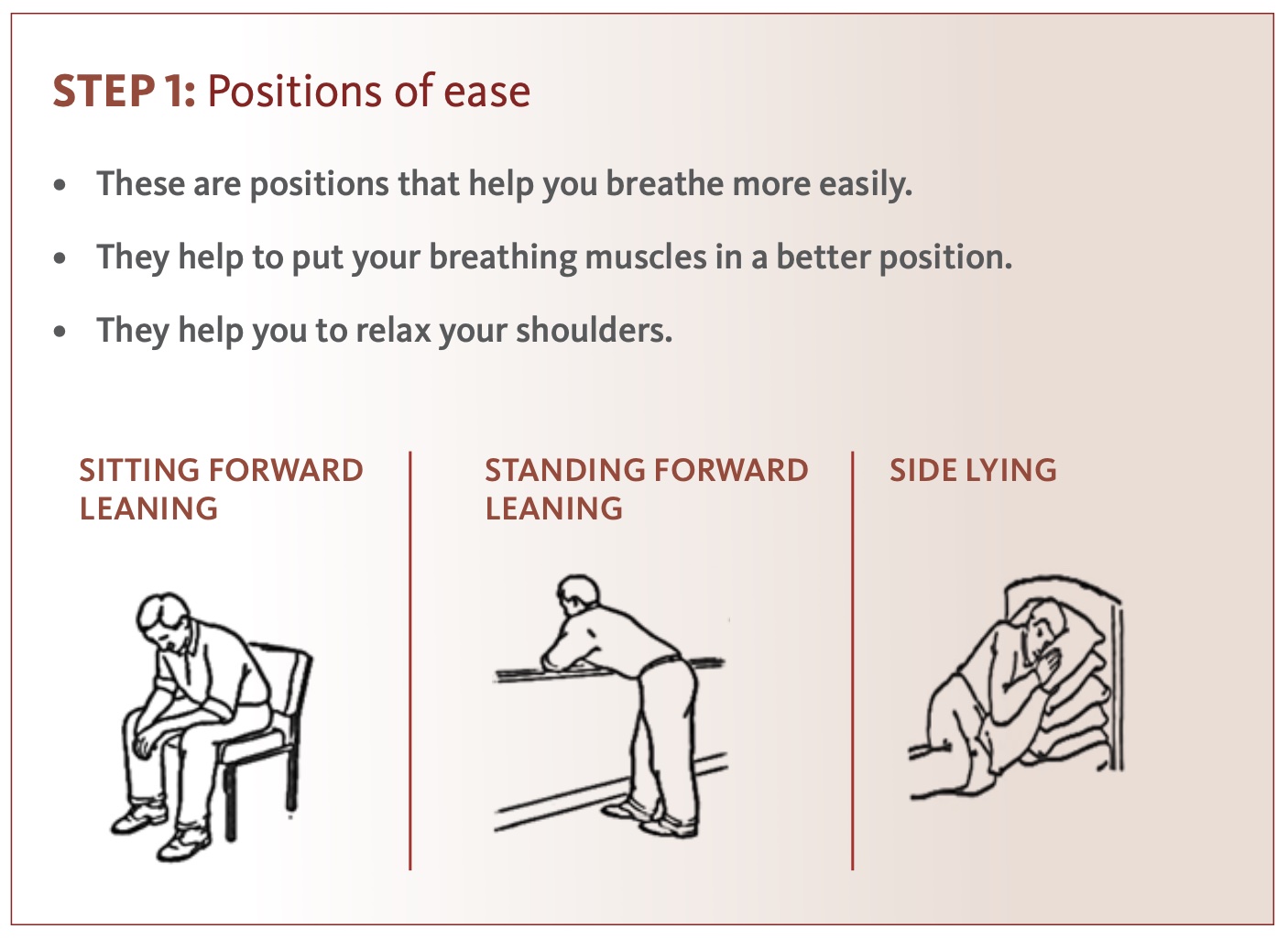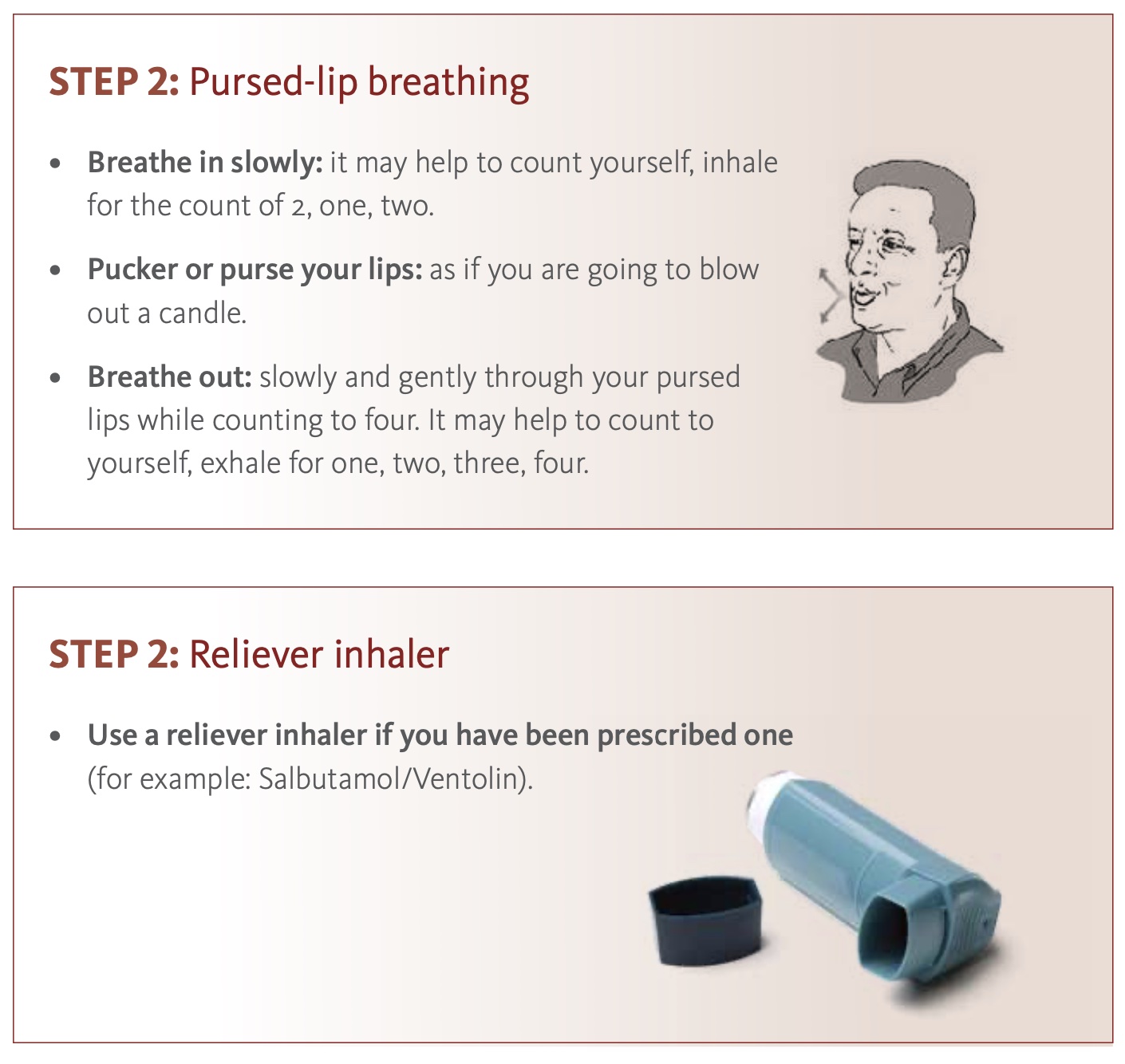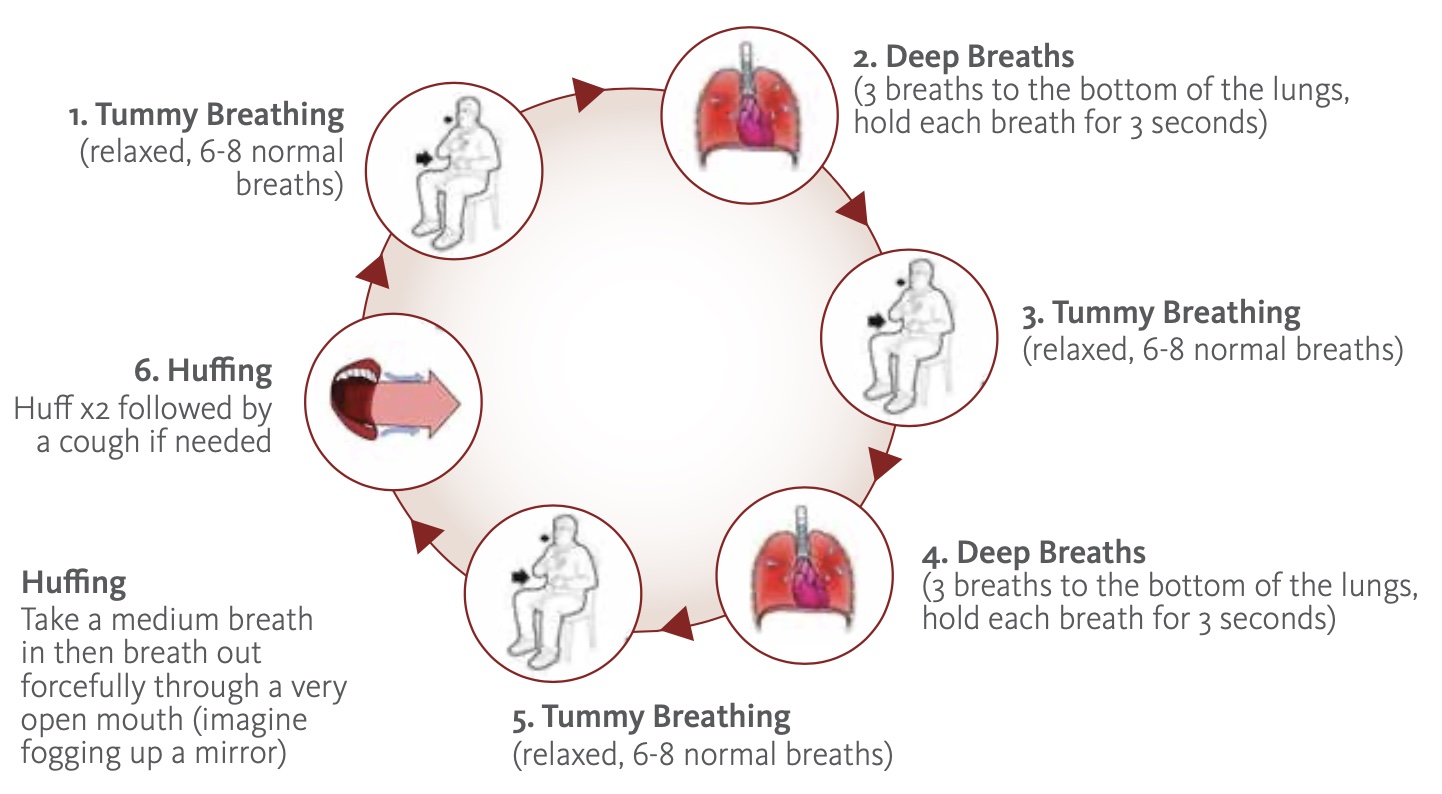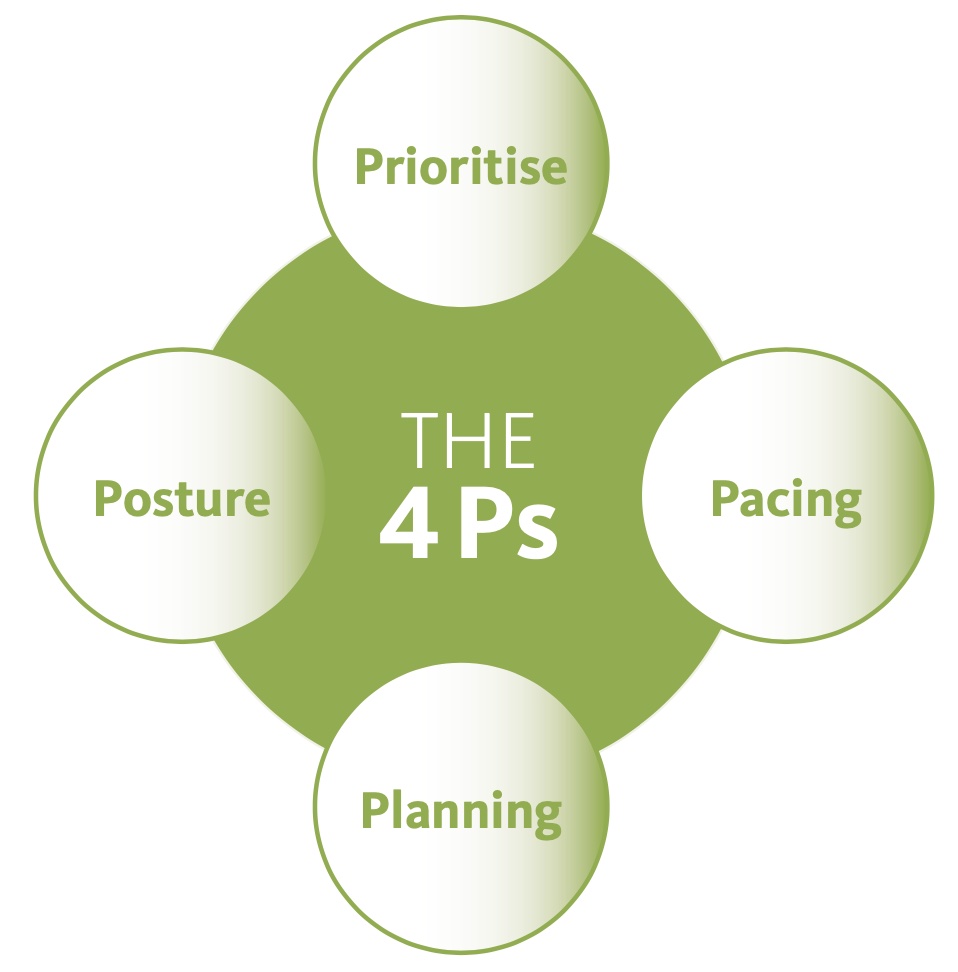Coping with Breathlessness
A common symptom of COPD is breathlessness. Breathlessness is feeling short of breath (SOB) or having trouble breathing. Many daily tasks can make you breathless such as walking, getting dressed, climbing stairs or doing jobs around the house. You may feel uncomfortable and being breathless can make you panic or feel frightened.
Taking control – What can I do?
- Do not hold your breath this will make you feel more breathless.
- Do not avoid doing the things that make you breathless. When you learn how to control your breathing these feelings will not worry you as much and you will be able to do more.
- Do not panic when you get breathless, your breathing will settle.
Use the following 3 steps to control your breathing:


Clearing Your Phlegm/Airway Clearance
A common symptom of COPD can be a lot of mucous/phlegm in the lungs, which can often be hard to clear. If there is a big build-up of phlegm in the lungs this can lead to chest infections.
What can I do?
There are number of techniques that can be of use. Please ask your Physiotherapist for further advice on a technique which best suits you.
The Active Cycle of Breathing Technique (ACBT) is a set of breathing exercises, which is used to help loosen and clear any phlegm you may have. (See below diagram)
It is good practice to clear your chest with these exercises every morning and evening if you suffer from a build-up of phlegm. This might need to be increased to every 1-2 hours when you are feeling unwell and have lots of phlegm.
Repeat until your phlegm is gone and you no longer feel the “rattle” of phlegm.
Stop if you become tired or your chest feels wheezy or tight. Return to the exercises later when you are feeling better.
Sit comfortably and relax your shoulders.

Saving your Energy
Saving your energy is changing the way you do activities to reduce the amount of energy needed. To be able to do this you will need to plan your day by keeping a balance of work, rest and play. This is called conserving energy.

To conserve energy, follow the 4 P’s:
Prioritise
- Make a list of what you have to do
- Place the task in order of importance, into what you need to do,want to do and should do.
- Get rid of any unnecessary tasks
- Decide if someone else can do some tasks for you
- Change between light and heavy tasks.
Pacing
- Work at a slow steady pace
- Allow plenty of time for rest and relaxation, at least 5 – 10 minutes every hour
- Use breathlessness as a guide
- Space difficult and heavy tasks evenly throughout the week.
Planning
- Change the activities to keep the energy you use low to do the job
- Sit rather than stand when possible, use a perching or high stool when possible
- Organise yourself, your home and your working environment
- Put items you frequently use in an easy to reach place
- Consider using a bag or basket to carry things
- Plan tasks around when help is available and when your energy levels are high.
Posture
- Push or pull objects, rather than lifting
- Use your legs, not your back
- Use your strongest, largest joints
- Keep your arm movements at a low rate
- Avoid bending, reaching or twisting.
